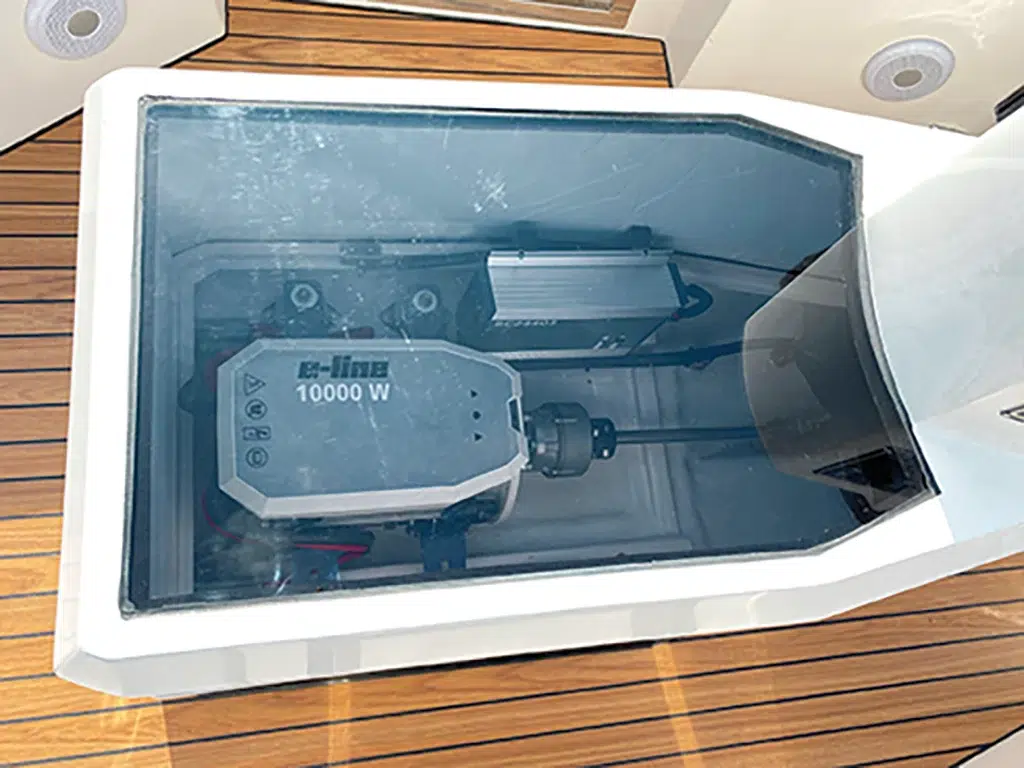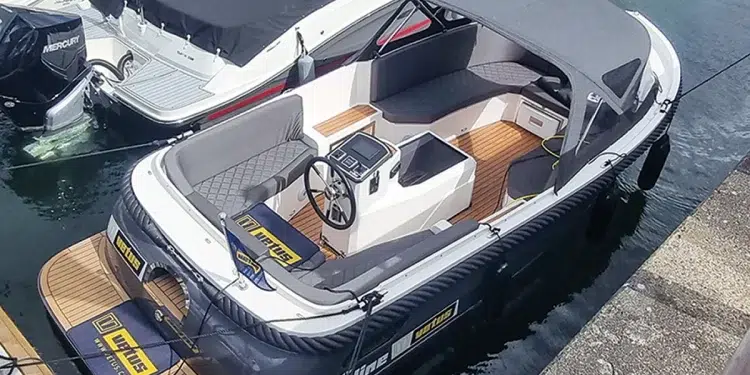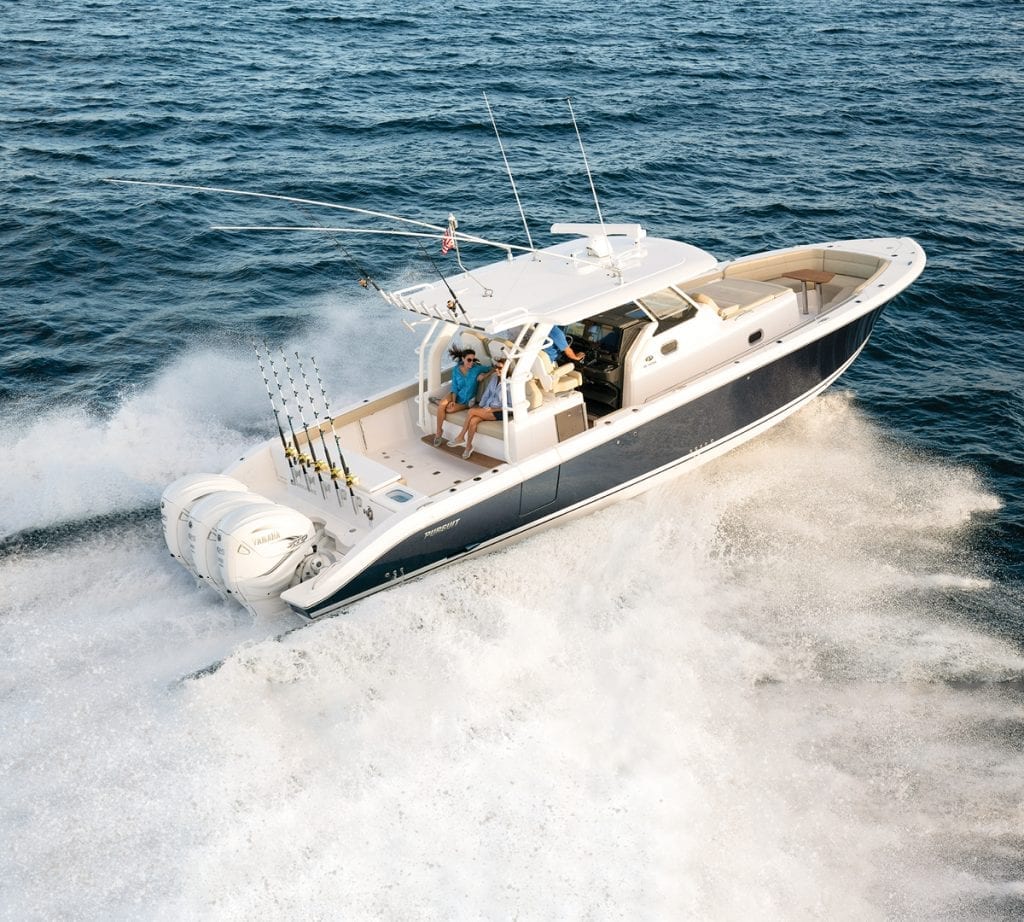Charged Up
Repower option with VETUS E-LINE AIR electric boat propulsion
Do you have a small tender or sailboat ready for repower? It may be time to consider electric boat propulsion with VETUS’ E-LINE AIR system.
The VETUS EAIR04024, EAIR040, and EAIR060 offers outputs of 4 kW at 24 volts, 4 kW at 48 volts, and 6 kW at 48 volts respectively, suitable for new build or repower projects. To roughly compare an electric motor to gasoline engines, the formula to convert kilowatts (kW) into horsepower is to multiply the electric motor’s peak kW by 1.3355. Using that formula for the EAIR060 with a peak power of 8.6 kW, it is about 11.5 horsepower. However, because of VETUS’ higher electric torque, VETUS states that the EAIR060 is comparable to 15 horsepower looking at torque and output.
“The compact E-LINE motor range is designed to fit existing propulsion foundations and propeller shaft installations,” explained Sander Gesink, VETUS marketing director. “The supplied Swap & Go mounting brackets, with motor mounts specifically developed for electric propulsion motors, can easily be adjusted in height and set to angle the shaft to zero degrees or eight degrees. This makes repowering and connecting to an existing propeller shaft a simple task.”
When powered by a 7.4 kWh-net capacity battery pack, the 6 kW-output power motor can run a 23-foot boat at five knots for more than two hours. Decreasing the speed greatly increases the range up to more than nine hours of continuous boating. VETUS offers a selection of deep-cycle, AGM deep-cycle, and lithium batteries for its electric propulsion solutions.
“It’s possible to install a twin installation, but typically our E-drives are installed in smaller boats where only single installations exist,” Gesink said. “A possible next step in our technology could be to introduce heavier kW electric motors and explore even better battery technologies. Battery technology is the key driver for electric propulsion. The more batteries you have on board, the heavier the boat becomes.”
The VETUS air-cooled electric propulsion system gives certain vessels an advantage over water-cooled variants. One advantage is in weed-infested waters because with air-cooling there is no water inlet that could be blocked by debris.
The E-LINE AIR system also has fewer parts than gas engines, and the lightweight arrangement of fan and ducting requiring less maintenance than a water-cooled pump, pipework, and strainer. During the cold winter months, air cooling can prevent costly water pump or pipe-freezing issues.
In an informative blog post on the VETUS website around the myths of electric boating, Arthur Roeling, the director of R&D and Service at VETUS, noted adoption of recreational electric propulsion is slow, despite the benefits.
Subscribe Here For Weekly Updates
“Electric propulsion systems are still suffering from the stigma that was brought to the sector by early attempts at marine electrification,” Roeling said. “These technologies, although critical to get the sector moving, used improperly marinized components, and earlier heavier, lower energy density battery technologies.”
Another misconception in electric propulsion is that any form of electric propulsion for boats simply isn’t viable, due to the realities of system weight and battery energy density. It really depends upon the boat and use. A 39-foot RIB designed to go 40 knots for 300 miles without recharging isn’t a practical candidate for electric propulsion. However, the VETUS E-DRIVE motors suit a range of sail, power, and narrow boats.
Because the E-LINE motors are both a modular and fully integrated design, it’s simple to repower again with another electric motor. The key components like the motor controller are integrated within the unit. That makes the job of correctly specifying a system and ensuring cross-component compatibility easy.
The motors in the E-LINE AIR range are all 1:1 direct drive, meaning the propeller always spins at the same speed as the motor. This design saves money and reduces the noise and complexity of a mechanical gearbox. For the captain, the direct-drive design provides near-instantaneous shifting between forward and reverse.

In the blog, Roeling drills down on another marine electrification misconception—that electric range anxiety is often cited as a reason to stick with fossil fuel powering options.
“Convincing boat owners around what they think they need versus what they actually need to enjoy their boat is another big obstacle,” Roeling said. “It’s often cited that a full day on the water is the big switch off when it comes to electric, but typical usage is more often a couple of hours, moor up, have lunch, and set off again.”
Finally, slow-speed maneuvering is improved with fully electric propulsion. The propeller speed can be controlled down to zero, and the shift between forward and reverse is an instantaneous flick of an electronic controller rather than the much slower mechanical shift with grinding gears.
Because electric motors produce their maximum torque directly at their lowest rpm, an electric boat can be maneuvered very slowly with precise response around the docks. When compared with an inboard-powered boat, even with the engine at a minimum rpm, the boat moves faster than the captain wants, making very slow speed maneuvers difficult with a schedule of clunky gearbox shifts between forward and reverse.
“It is now more viable than ever for private boat owners to go electric because they want to, not because they soon might have to,” Roeling said. “The VETUS mission is to make boating more comfortable and less environmentally damaging. We encourage owners of small recreational craft to take in their environment, with less speed and more relaxation.”
-by Doug Thompson














